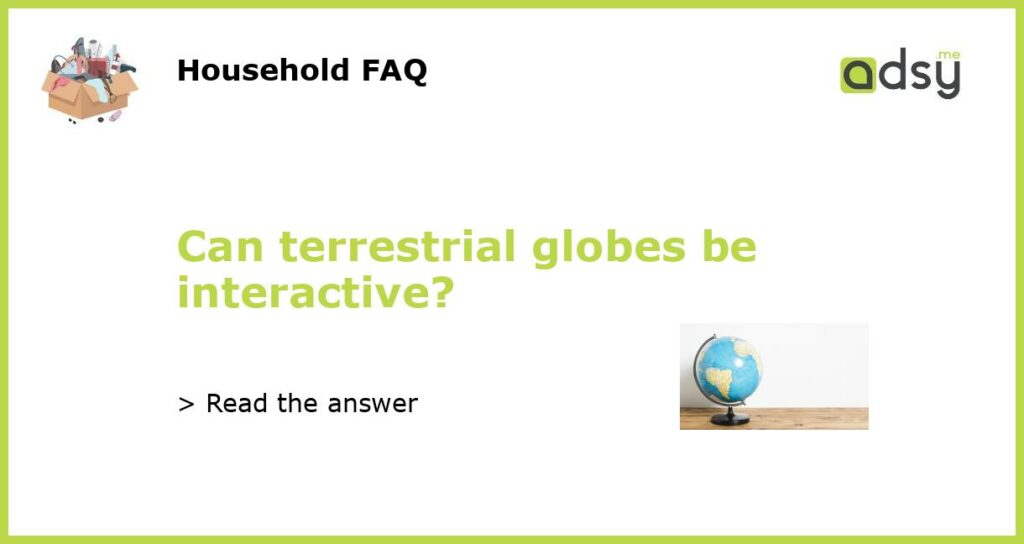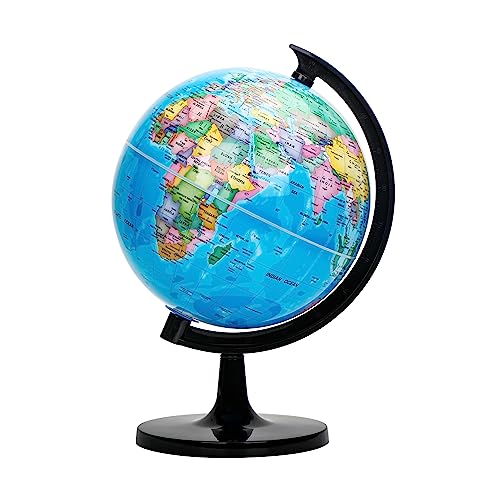Yes, terrestrial globes can be interactive
Terrestrial globes have long been used as educational tools to help people understand the world around them. Traditionally, these globes are static and provide a visual representation of the Earth’s surface, but technological advancements have made it possible for globes to become interactive. In this article, we will explore the concept of interactive terrestrial globes and discuss how they can provide a more engaging and immersive learning experience.
What are interactive terrestrial globes?
Interactive terrestrial globes are globes that incorporate technology to offer a more dynamic and engaging experience for users. These globes are equipped with sensors, touchscreens, and other interactive features that allow users to explore different aspects of the Earth. They often come with built-in software or can be connected to a computer or mobile device to access additional information and features.
Benefits of interactive terrestrial globes
There are several benefits to using interactive terrestrial globes in educational settings. Firstly, these globes provide a more interactive and engaging learning experience. Users can zoom in and out, rotate the globe, and explore different regions in detail. This hands-on approach helps to increase retention and understanding of geographical concepts.
Secondly, interactive terrestrial globes allow for the integration of multimedia content. Users can access videos, images, and other media that provide additional context and information about specific locations or topics. This multimedia integration enhances the learning experience and makes it more comprehensive.
Furthermore, interactive terrestrial globes can be updated with new information and data. As our understanding of the world evolves, new data and discoveries can be added to the globe, ensuring that the information is up to date and accurate. This feature is particularly useful in subjects like geography and environmental studies where information can change over time.
Examples of interactive terrestrial globes
There are several companies and organizations that offer interactive terrestrial globes for educational purposes. One popular example is the SMART Globe by Oregon Scientific. This interactive globe features a touchscreen interface that allows users to explore different regions and access additional information such as population, climate, and topography.
Another example is the Earth Globe by Orboot, which uses augmented reality to provide an interactive learning experience. Users can use a mobile app to scan the globe and access 3D models, quizzes, and interactive stories about different places around the world.
Google Earth is another widely used platform for exploring the Earth in an interactive way. Users can access satellite imagery, 3D models, and other features to explore different locations and learn about their geographic features.
The future of interactive terrestrial globes
As technology continues to advance, we can expect to see even more innovative and interactive terrestrial globes in the future. Virtual reality and augmented reality technologies have the potential to revolutionize the way we interact with globes, allowing for even more immersive and realistic experiences.
Additionally, the integration of artificial intelligence and machine learning could enable globes to provide personalized learning experiences. These globes could adapt to individual interests and learning styles, providing tailored content and suggestions for further exploration.
In conclusion, terrestrial globes can be interactive, providing a more engaging and immersive learning experience. These globes offer several benefits, including increased interactivity, multimedia integration, and the ability to update with new information. There are already examples of interactive terrestrial globes available on the market, with more advancements expected in the future. Interactive terrestrial globes have the potential to revolutionize the way we learn about the world around us.






